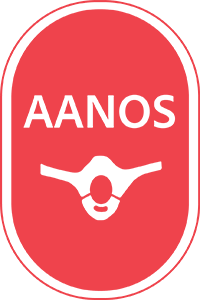S.M. Rezaian, M.D., Ph.D., L.R.C.P., M.R.C.P., F.R.C.S.
California Orthopaedic Medical Clinic, Beverly Hills, California
Introduction
Neck and back pain after a common cold are the most frequent reason for patients seeking the physicians advice. Neck pain with radiating pain to shoulder(s), arm(s), forearm(s) and the low back pain radiating to buttocks and thigh(s) and leg(s) are commonly caused by the herniated disc. The economic expenses and work lost due to back pain in the United States alone exceeds to $ 100,000,000,000., by year 2000 (Frymoyer, 1997). Any attempt to reduce this high expenses and long period of disabilities could not be over emphasized. As usual all neck and low back pain must be treated con- servatively for 3-6 months. After such a thorough treatment if patients was not able to return to his or her normal activities including his or her customary work. Surgical treatment is indicated.
Materials and Methods
We in our clinic have been engaged on using the minimal invasive technique of disc surgery for the past 17 years. We have operated on 951 patients. We have followed up these patients 2-15 years. The results have proven very much encouraging.
1) Micro-Surgical Endoscopic Diseectomy of Cervical Spine. Under general anesthesia, the patient was laid on his or her supine while an imaging intensifier with two television screens and an endoscopic with another screen were available. The level of herniated disc was visualized in television and the mark was made on the skin. Then through a small skin incision (1/8″) the anterior approach to the disc between carotid sheath laterally and tracheal and esophagus mass mediafly was completed. Disc was visualized in a television monitor and a small window was opened in annulus fibrous. Then the herniated part of the disc materials were sucked out with a shaver and different micro instrument consisted, micro- forceps, micro-curret and micro-basket. Usually the patient got up from anesthesia with no more pain. The patient went home on the same day, without surgical wound but just with a band aid. The patient resumed his activities in the next 3-7 days.
2) Micro-Surgical Endoseopic Surgery of Lumbar Spine: The technique is even more simple than the treatment of the cervical spine. The patient is placed on operating table on his or her side. The side on which the patient feels more pain is the right side for the approach.
The level of surgery was identified in a television monitor and marked on the skin of the patient. Then depending on the size of the patient 10-14 cm. from the midline, the skin tissue is locally anesthetized and through a 1/8″ incision, a guide wire is directed from postero-lateral to antero-medial toward the disc through the foramena. Usually when we touch a painful disc, the patient will experience more pain. Dynamic discography at this stage was another advantage. Through the intervertebral foramena a window was opened in postero-tateral part of disc just under the emerging nerve root. The actual protruded disc may be visible by applying the endoscopic on the television screen. A shaver was inserted inside of disc and cut and sucked out the debris of herniated disc. The tough and firm part of the disc taken out by using a micro-basket, forceps or curretg. In some occasion, tougher organized tissue under direct visualization evaporated by using laser beam. Usually the pain of the patient is relieved on the same session. Most patients left the hospital with just a band aid.
Discussion
Complication on 951 cases, were infection in I case, reflex sympathetic-dysreflexia in one case. Instrument failure in 2 cases. Re-operation required in 7 cases. Good or excellent in 82%, fair in 10%, poor in 3% and unknown in 5%. Since the discovery of herniated disc by Mixer and Barr in 1934, laminectomy and discectomy were the accepted procedure for treatment of herniated disc. Such a surgery requires general anesthesia, 3-5 days hospitalization with 3-12 months rehabilitation. There is 30-45% failure after such surgery (George Woods 11, 1992). Joseph Barr in 1963 in a lecture in San Diego mentioned that he was so sorry that his idea of discetomy has lead to so much failed back surgery. He advised that we must find another technique to remove the disc material with fewer iatrogenic complications. We are presenting this simple economic technique with encouraging results, neglible complications and fast rehabilitation course.
Conclusion
Minimal invasive endoscopic discectomy opens a new horizon for treatment of herniated disc of the cervical and lumbar spine of disc surgery (Hijikita, 1975, Kambin, 1983, Sheppard, 1986 and Rezaian, 1988, 1989 & 1995). The surgery is carried out as an out patient procedure, rehabilitation was fast and complication were neglible in 951 cases per- formed in our clinic. The results were excellent and good in over 82%.
References
1. Mixter, W.J., Barr, J.S.: Rupture of intervertebral disc with involvement of the spinal canal. New Eng. J. 1934, 211:210
2. Barr, J.S., et al.: Evaluation of end results in treatment of ruptured lumbar intervertebral disc with protrusion of nucleus putposus. J. Surg. 1967, 123:250
3. Rezaian, S.M., et al.: The results of simple laminectomy in rabbits. Presented at the Advanced Symposium and Workshops on the Spine, Presented by the International College of Surgeon, Las Vegas, NV, March 1986
4. Hijikata, S.A.: Percutaneous nucteutome, Neve Behamdlung der Diskushernie, J. Toden Hosp. 1975, 5:35
5. Kambin, P., Gellman, H.: Clin. Orth. Ret. Res. 1983, 174:127
6. Rexaian, S.M., Silver, M.L.: Percutaneous Discectomy. In Mayer H.M., Brock, M. (Eds) Percutaneous automated discectomy: A new method for lumbar disc removal. J. Neurosurg. 1987, 66:143
